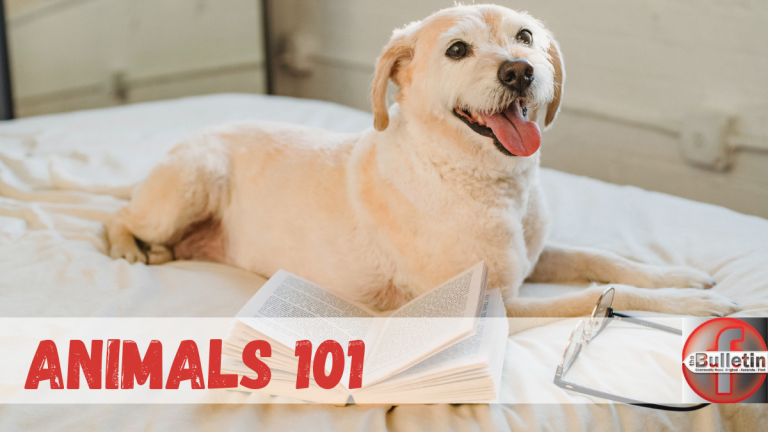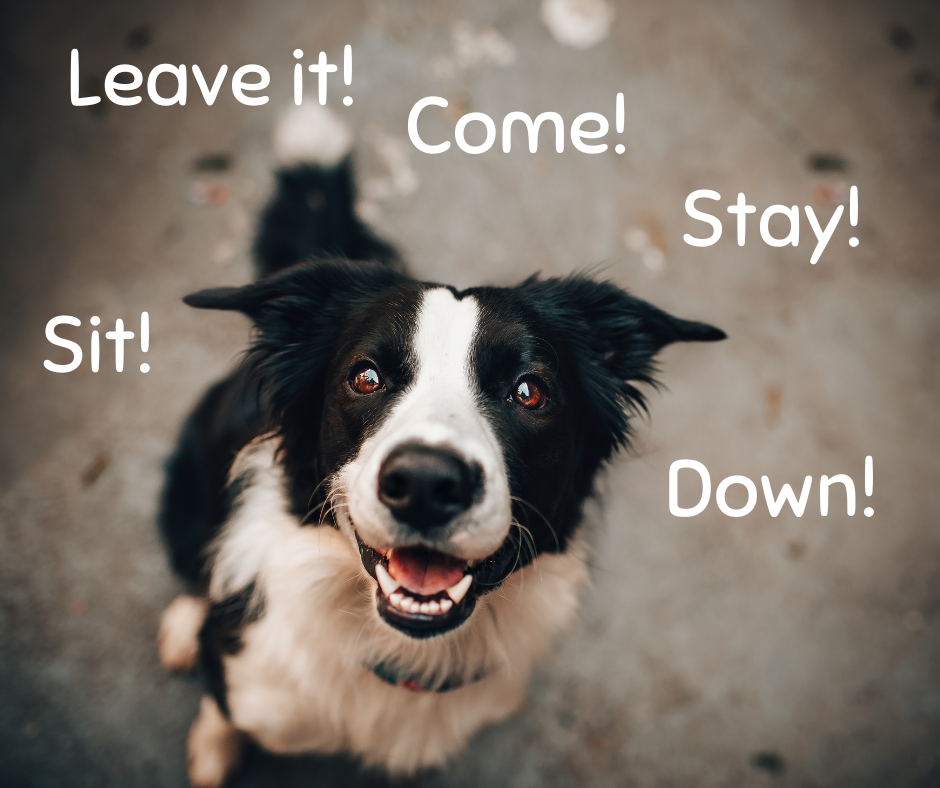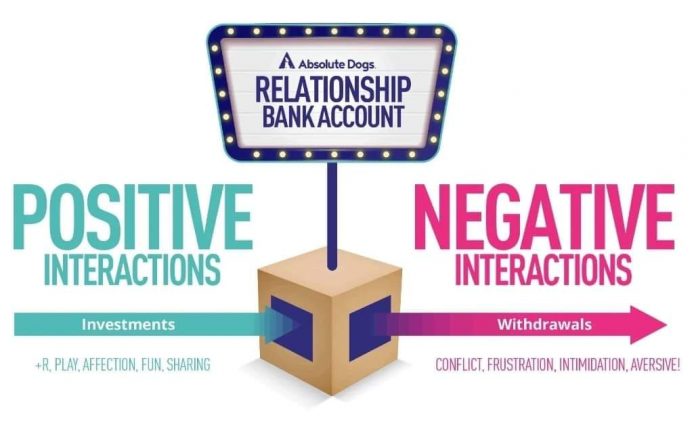
EMPOWER YOUR PET’S JOURNEY BY INVESTING TIME IN TRAINING
Last week, we looked at the “why” and “what” of training your animals, so this week we will jump right in with some tips for training your pets and unleashing their potential, leading to a happier and well-balanced life. The majority of training tips for animals focus on dogs; however, the psychology and principles remain similar for animals in general. Remember that opinions and situations might differ, but it is important that you, who know your animals best, use what works for you and them.

Editorial note – This article is a reprint from 25 October 2023
HERE ARE OUR TOP TIPS
- THEIR NAME – Choose the animal’s name wisely. It helps to consider a short name ending with a strong consonant that they can always hear clearly. A strong ending, like in the names “Jasper,” “Jack,” and “Ginger.” I choose not to use their name in the negative sense, for example, when trying to interrupt a behaviour.
- START YOUNG – Although we believe you can teach an old dog new tricks, the earlier they put a particular skill or training in their memory bank, the better!
- REWARD-BASED TRAINING – Positive reinforcement is our preferred method, and punishment is never one! Reward-based training is less likely to cause stress or anxiety. Positive, however, does not mean permissive. Don’t set your pet up for failure, and do allow them to rehearse the right behaviour frequently. Keep the session short, simple, and fun. Give them options and choices in the training. Be careful not to become dependent on treats only for training. Your attention is another great reward that can be used.
- TRAIN IN “DOGS TIME” – Pets live in the moment, and two minutes after they’ve done something, they’ve likely already forgotten about it. So, when your animals are displaying unwanted behaviour, use the training techniques right away so they have a chance to make the association between the behaviour and the “correction”. Consistent repetition will reinforce what they’ve learned.
- DIRECTION NOT CORRECTION – Interrupt the unwanted behaviour as soon as possible and redirect them at that moment, e.g., if they are digging a hole in your garden, guide them to the sand pit you made for them immediately.
- ADDRESS THE CAUSE & A.S.A.P – As soon as serious behavioural concerns (e.g., aggression, fear, etc.) surface and you rule out any health issues, address the behaviour immediately (hours or a few days). Do not let it escalate. You need to find out what the cause of the behavioural changes is. This could be a new family member (animal or human), a kid or adult abusing them, moving, lack of stimulation or resources, unmet needs, etc.
- HANDLE REACTIVITY – Reactivity affects their ability to train and is an important aspect to address. Reactivity is when a dog overreacts to things in their environment. These reactions can include barking, lunging, and growling. You need to limit or cease exposure to the “random” triggers and rather work on them in an isolated, well-planned setting. Don’t let the triggers stack!
- CONSENT – Consent should be CLEAR, VOLUNTARY, with ONGOING PERMISSION! Consent is an important part of any healthy relationship, and teaching people to allow the animals to approach you is a good practice that we need to be ever-encouraging. Even when you touch your pet, it should be with consent. Don’t let people just touch your pets because they are “friendly”.
- BODY LANGUAGE – Animals use a series of facial expressions and body postures to communicate how they feel. Your ability to understand and interpret body language can help you pick up on unspoken issues or feelings for your animals. It is a major part of communication, meeting their needs, and it will improve training. Watch out for T-E-M-P (tails, ears & eyes, mouth, and posture). Know what normal behaviour is and what it is not. Some behaviours, like digging, sniffing butts or crotches, rolling in stuff and even humping/mounting are quite normal.
- BARK & GROWL Never punish a growl. This is a sign that they are uncomfortable. When you punish it, next time they might skip the growl and go straight to biting. Barking is also a way to communicate, and through the barking, your dog is trying to tell you something. If you talk to someone and they ignore you, how does that feel? When my dog barks, I go and check and say, “I see the cat, for example, and thank you for letting me know”. Some suggest barking with them and then decreasing that barking… it would be interesting to investigate this.
- EYE CONTACT – Training eye contact as a wanted behaviour can help you with other areas of training. To teach your animal eye contact as a behaviour, you simply need to reward them when they look at you. This teaches them that deciding to look at us is a rewarding one, and as such, they will begin to do it more often and for longer periods. Then, if you choose to, you can add in a cue like ‘look’, so you have the behaviour on cue, and you can take it on the road.
- HAND SIGNALS vs. VERBAL CUES – Verbal commands are great, but I prefer that our fur-kids understand hand signals too, as an additional skill. This could be and has been helpful in an emergency or when they are further away from you, or when you can’t talk for some reason.
- EXERCISE-DISCIPLINE-AFFECTION – The biggest cause of misbehaviour in dogs is when their needs for exercise, discipline, and affection are not fulfilled. Especially when they do not get enough exercise to drain their excess energy and bring their minds to a calmer state, during which we can reinforce and reward that calm behaviour with affection. It is very difficult to train an overwhelmed mind (human or animal), and if you give affection to this overexcited behaviour, you may encourage it.
- YOUR MINDSET – If you try to train your pet when you have had a long day or feel sick or frustrated, it can be detrimental to their training. Your calm, positive, and assertive energy is needed for training.

- MAKE DEPOSITS INTO YOUR RELATIONSHIP BANK ACCOUNT – Trick training is a great way of teaching your pet and bonding with them. Playing games to learn is another awesome way to learn and have fun. Free play is also necessary, and training should not just be formal. The best enrichment activities include natural behaviour and time with you. Are you making deposits into your relationship bank account with your pet through play and quality time? If your dog doesn’t find you engaging, it’s unlikely they’ll focus on you over the distractions in their environment (chew toys, other dogs, cyclists, smells – you name it!). Follow Absolute Dogs for more on this.
- THE BREED – although we never blame the breed, a Border collie might learn a new behaviour with 4 tries, while an Afghan hound might need 40 tries. A powerful breed like a Pitbull can do more damage when not trained, or be tougher to handle than a Chihuahua that is not trained. We encourage using breed-specific types of activities.
- PATIENCE – Patience, in general, is important for training. You can’t expect your pet to learn everything in a few hours. It takes time and lots of practice to reinforce a behaviour. When you ask something of your dog, give them time to think. Do not expect that because they did something well two days ago, it will automatically happen today.
- DECIDE ON HOUSE RULES – It is important to decide in advance what the house rules are, and the whole family must stick to them! Be consistent.
- HELP YOUR DOG RELAX – Especially when you have an anxious or fearful pet, you need to help them manage stress better. This can include getting enough sleep, engaging in sniffing, letting them chew, vet checks, safe herbal remedies, or prescribed medications if necessary. PTSD in pets is a reality. You should set up a private den, which is their spot alone, and where they can go to debrief or relax and feel safe. When your puppy gets home, give them a warm hot-water bottle and put a ticking clock near their sleeping area, which can imitate the heat and heartbeat of littermates that will soothe your pup in their new environment.
- ROUTINE – Establishing a daily schedule for your new pup or other animals is essential to having a well-behaved, balanced pet.
- FOOD – You can use food and treats for positive reinforcement and in games, but wean them from expecting only treats, too. There is a difference between giving your dog a piece of food from your hand and your dog only getting food if it comes from your hand. When we feed dogs exclusively through interaction with us, we make eating conditional, when food is a basic welfare need that should come with zero strings attached. Food aggression and guarding need to be addressed through training; however, we do believe eating should be a solitary dining experience. Great if your pets can eat close to each other, but they should not be forced to do so.
- PET-PROOF YOUR YARD & HOME – It is your responsibility to make sure that your yard is safe and secure, especially if you are still training your pet; however, you can teach them not to go out or to sit and wait in a spot for the car to park, etc. If you open the gate and do not teach them the boundaries, then you can’t expect them to stay inside.
- THE RIGHT EQUIPMENT – Many pet parents don’t realize the importance of choosing the right type of collar, harness, and leash for their dog. I believe dogs should wear a harness and should never be leashed or even handled by the collar. I prefer the harness above a collar for health and safety reasons. There are, however, different harnesses too. The harness should not restrict their shoulder blade movement, and I prefer a Y-shape harness. Teach them from a young age to be comfortable with a harness and leash. Choosing the right bowl for eating and knowing which toys are safe for your animals is important, too.
- CRATE TRAINING, MUZZLE TRAINING & TOUCHING Although animals should not be kept in crates for very long, it can be helpful in an emergency if they are not scared of being crated. The same goes for muzzle training. Some animals are more cuddle bugs than others; however, for the sake of lower anxiety with veterinary or grooming visits, help your pet become more comfortable with frequent touching. Touching the paws, ears, looking in the mouth, the nose, the eyes, touching the body, etc.
- UNDIVIDED ATTENTION – If you’re like many busy animal parents today, you’re multitasking when you’re interacting with your dog. For example, you play tug-of-war with one hand while talking on the phone or checking Facebook with the other. Give them your undivided attention because they deserve it!
- LEAVING MOM TOO EARLY – Baby animals learn valuable information from their parents, especially their mom. Studies suggest pups and kittens should stay with their mom for 12 weeks, and I agree!
- SOCIALIZATION Play is not socialization. It is an important skill, but it is separate from socialization. There are many definitions and opinions, but for me, it is getting my fur-kid accustomed (at a speed they can handle) to different things and people, or animals. Slowly and safely introducing them to the world humans forced them to live in. Note that a dog park is not for socialization; not for puppies, and not for your dog-selective dog.
Also, read more specific training tips from Beyond Behaviour and about training from last week’s article.
IF YOUR DOG STRUGGLES WITH TRAINING
Often, people will say that their dog is stubborn if they do not want to do the training well or at all, but there are many aspects, physically and emotionally, that could affect them.
- Are they happy/stress-free?
- Did they sleep well, and are they well-rested?
- Are they comfortable and not in pain?
- Do they feel safe in the environment?
- Did they have an appetite?
- Are they physically capable of what you require of them?
- Are they not overwhelmed or trigger-stacked?
- Is there something distracting in the environment?
- Are you asking too much of them?
- Are you clear on what you expect of them, or are they unsure?

SPECIAL CONSIDERATIONS WITH THE TRAINING OF SMALL DOGS
Dr. Karen Becker shares how small dogs have unfairly gotten a reputation for being yappy, nervous, and snappy. All dogs are capable of learning good manners through fear-free training.
If you have a small dog, help them stand tall with these training tips:
1. Get down close to her level instead of looming over them.
2. Offer extra-small training treats.
3. Use a harness, as well as small-sized toys and training tools.
4. Teach your dog a verbal “lift-off” cue to signal you’re about to pick them up.
5. Let them regularly socialize with safe humans and other dogs on their own terms.
6. Don’t accept obnoxious behaviour just because of size.
Meeting your pet’s needs is your responsibility, and that includes health, diet, providing fresh, clean drinking water, exercise, mental stimulation, love, proper care, a commitment to their life, and more. Training them or addressing behavioural issues is a crucial part of this. Contact a trainer or behaviourist for professional help, depending on what the need may be. Be consistent, have patience, and end every session on a positive note!
Join us again next week as we learn more about the pets of our lives.